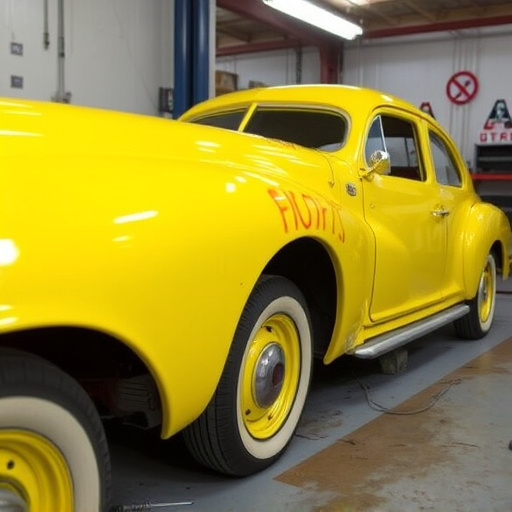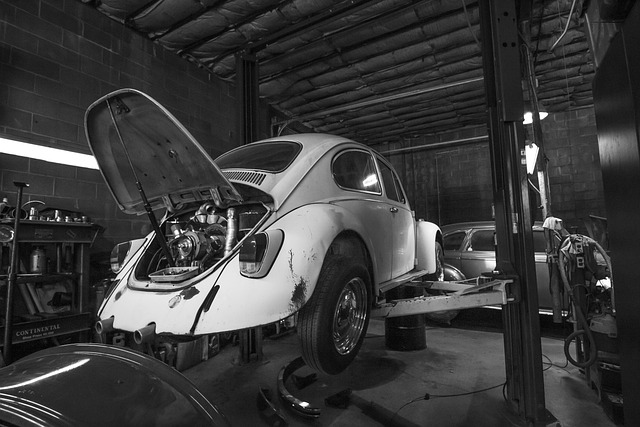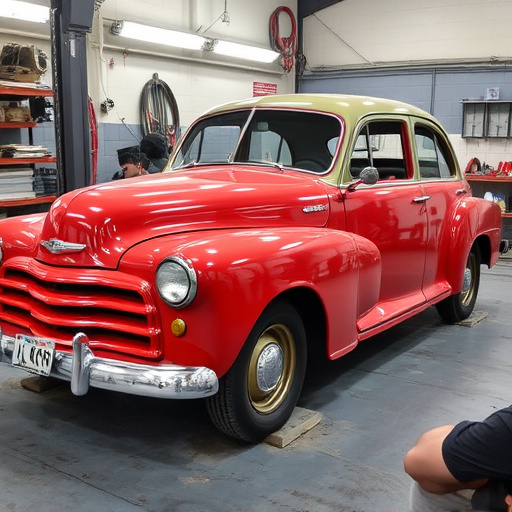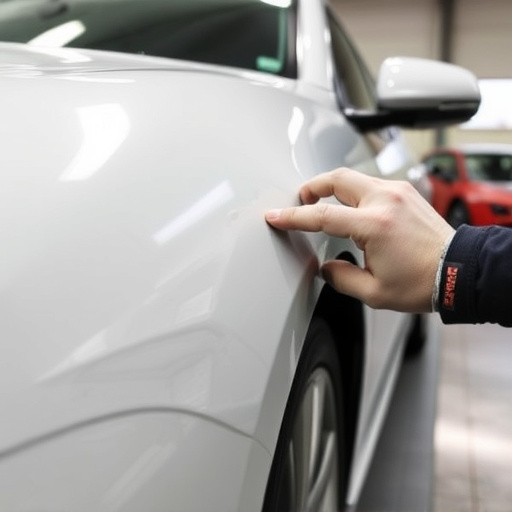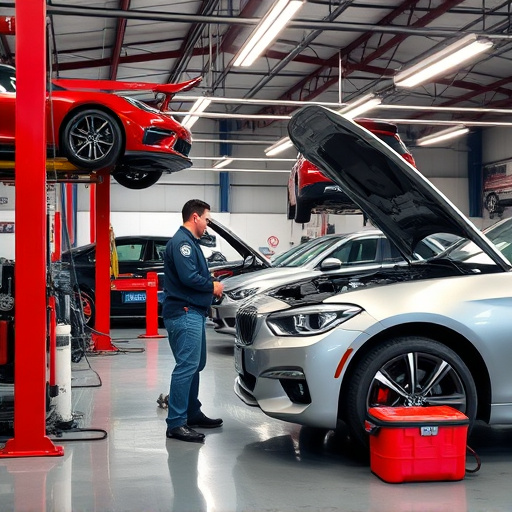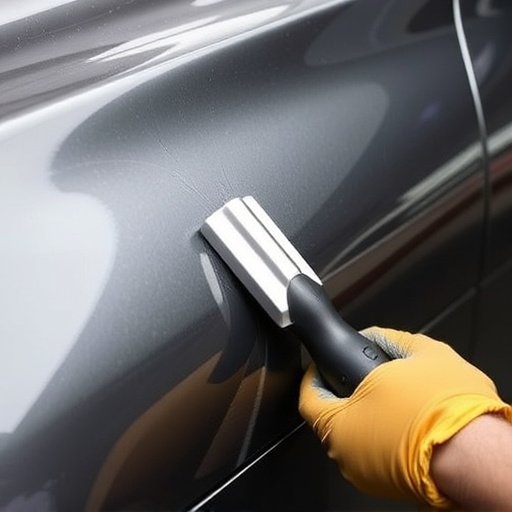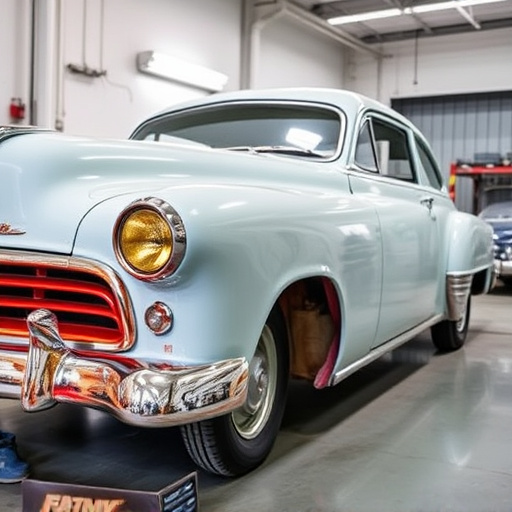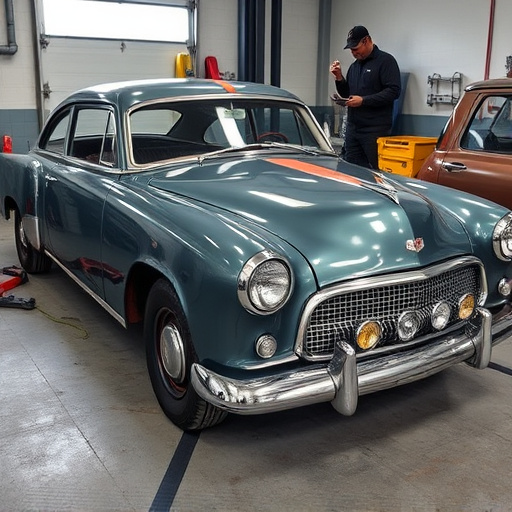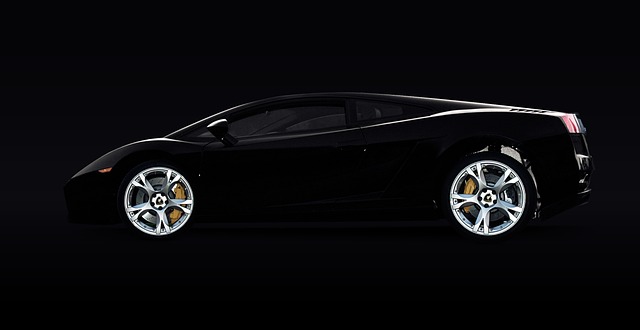Mercedes 48V system repair requires specialized skills and advanced tools for high-voltage operations. Diagnosing issues in EQ Boost components involves monitoring voltage, current, and resistance. Structured repairs focus on identifying faulty parts, using compatible tools, following detailed guides, and ensuring safety. Advanced diagnostic tools test the repaired area, followed by bodywork restoration for a seamless finish.
Repairing Mercedes EQ Boost components is a critical task for maintaining these high-performance electric vehicles. This article guides you through the essential aspects of understanding the Mercedes 48V system repair basics, helping you navigate common EQ Boost component failures effectively. Learn from our step-by-step guide designed to streamline efficient repairs, ensuring your Mercedes remains in top condition. Discover expert tips and techniques tailored specifically for the Mercedes 48V system repair process.
- Understanding Mercedes 48V System Repair Basics
- Diagnosing Common EQ Boost Component Failures
- Step-by-Step Guide to Efficient Repairs
Understanding Mercedes 48V System Repair Basics

The Mercedes 48V system, a cornerstone of modern electric and hybrid vehicles, requires specialized care during repairs to ensure optimal performance and longevity. Understanding its intricate architecture is paramount for any auto repair near me that aims to handle these sophisticated cars effectively. This system, unlike traditional 12V setups, operates at higher voltages, necessitating advanced diagnostic tools and techniques to navigate its complexities.
When it comes to repairing Mercedes EQ Boost components, knowledge of the 48V system’s basics is crucial. Auto body work involves more than just fixing visible dents; it entails precise manipulation of electrical systems, high-voltage wiring, and sophisticated sensors. Proper repair techniques ensure that the vehicle maintains its efficiency, safety features, and overall reliability. So, whether tackling a car dent removal or a more intricate diagnostic, technicians must be adept in handling these advanced automotive body work challenges to deliver top-notch Mercedes repairs.
Diagnosing Common EQ Boost Component Failures
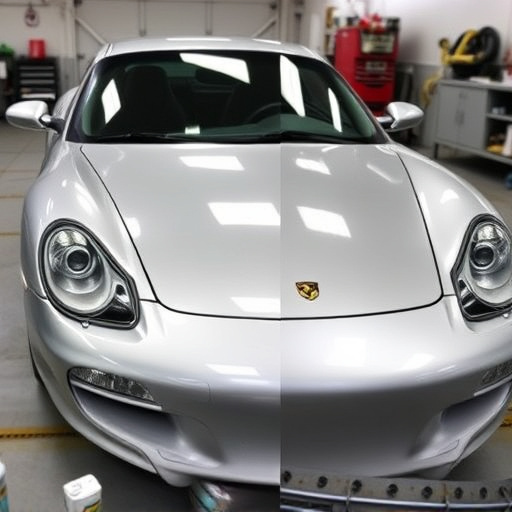
Identifying potential failures in Mercedes EQ Boost components is a crucial step in ensuring proper repairs. These advanced 48V systems are integral to modern Mercedes vehicles, managing high-voltage power distribution and providing enhanced performance. Common issues can arise due to various factors, such as voltage spikes, component wear, or manufacturing defects. For instance, the high-voltage battery pack, a critical element, may exhibit problems like short circuits or capacity degradation over time.
Diagnosing these failures accurately is key to effective repairs. Mechanics should employ advanced diagnostic tools to monitor system performance and identify anomalies. This process involves checking voltage levels, current flows, and any unusual resistance in the circuit. Regular maintenance, including checking for signs of damage after minor incidents like fender benders or auto glass repairs, can also prevent significant frame straightening issues down the line. Proper handling of these components is essential to avoid further complications, especially when dealing with complex Mercedes 48V system repair cases.
Step-by-Step Guide to Efficient Repairs
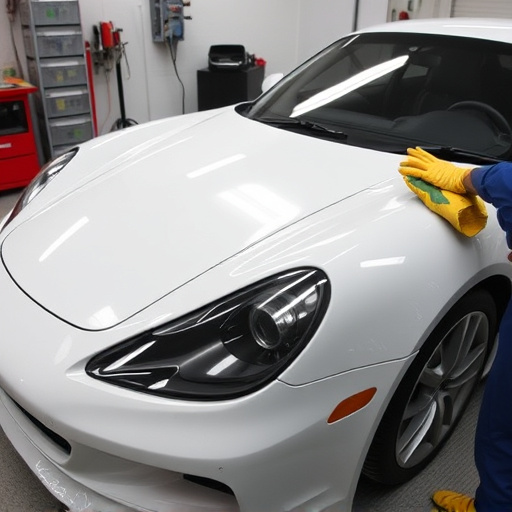
Repairs to Mercedes EQ Boost components require a systematic approach for optimal efficiency. First, identify the specific component in need of repair or replacement – whether it’s the 48V system, battery modules, or power electronics. This step is crucial as each part has unique requirements and connections within the vehicle’s complex electric architecture. Next, gather the necessary tools and parts, ensuring compatibility with your Mercedes model. Safety is paramount; use proper protective gear and follow manufacturer guidelines.
A detailed guide should be followed for each repair: start by isolating the affected component to prevent short circuits or power surges during work. Carefully demount the part, taking note of its position and connections. Inspect for damage, corrosion, or wear. Clean corroded areas thoroughly before replacing components. Reassemble accurately, double-checking connections, and ensuring proper alignment. Test the repaired area using advanced diagnostic tools designed for Mercedes 48V system repair. If all functions operate normally, proceed with vehicle bodywork restoration, including any necessary paint repairs at an auto body shop to ensure a seamless, like-new finish.
Repairing Mercedes EQ Boost components efficiently requires a thorough understanding of the car’s 48V system, ability to diagnose common failures, and adherence to a structured repair guide. By mastering these aspects, you can ensure that not only are Mercedes vehicles restored to their optimal performance but also that the renowned reliability and quality of the Mercedes brand are preserved. Whether you’re a professional mechanic or an enthusiastic DIYer, proper 48V system repair is crucial for keeping these cutting-edge electric vehicles on the road for years to come.
